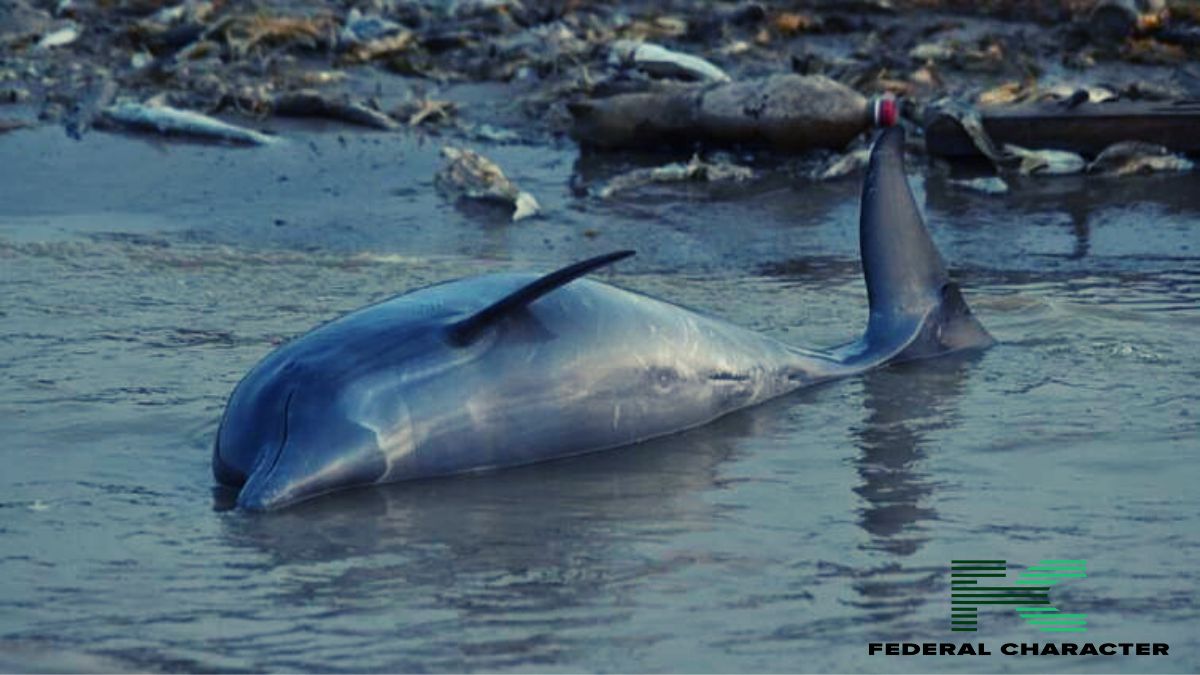The lifeless bodies of 120 river dolphins were discovered floating in a tributary of the Amazon River over the past week. Experts suspect that severe drought and scorching heat are the culprits behind this devastating loss.
During an unusually severe drought, the water levels in the river dropped significantly, causing certain stretches to heat up to temperatures that became unbearable for the river dolphins. Researchers believe that this hostile environment, combined with a lack of oxygen in the water that led to the recent death of thousands of fish in Amazon rivers, has led to this tragic outcome.
These Amazon river dolphins, known for their striking pink hue, are a unique freshwater species found exclusively in South American rivers and represent one of the few remaining freshwater dolphin species worldwide. Their slow reproductive cycles make them particularly vulnerable to various threats.
Amidst the poignant scene of decomposing dolphins, biologists and experts, donned in white personal protective clothing and masks, worked diligently on Monday to perform autopsies on each of the carcasses in an attempt to pinpoint the exact cause of death.
While experts strongly suspect the role of drought and heat in this alarming spike in dolphin mortality, they are diligently investigating other potential factors, including the possibility of a bacterial infection that might have afflicted the dolphins in a lake formed by the River Tefé before it flows into the Amazon.
A staggering 70 of these dolphin carcasses emerged last Thursday when the water temperature in Lake Tefé soared to a scorching 39 degrees Celsius (102 degrees Fahrenheit), a startling 10 degrees above the average for this time of the year. Although the water temperature briefly dropped for a few days, it rose again on Sunday to 37°C (99°F), raising further concerns among experts.
Environmental activists have attributed these unusual conditions to climate change, which increases the likelihood of droughts and heatwaves. However, it remains unclear to what extent global warming contributed to the current Amazon drought, as other factors, such as El Niño, are also in play.
Miriam Marmontel, a researcher at the Mamirauá Environmental Institute focusing on the mid-Solimões river basin, lamented the discovery, stating that nearly eight out of every ten carcasses belong to the pink dolphins, known as “botos” in Brazil, which could represent a substantial loss, potentially amounting to 10% of their estimated population in Lake Tefé.
Both the boto and the gray river dolphin, known as the “tucuxi,” are classified as threatened species on the International Union for Conservation of Nature’s red list.
“Ten percent is an alarmingly high percentage of loss, and the possibility of it increasing further threatens the very survival of the species in Lake Tefé,” warned Marmontel.
Brazil’s Chico Mendes Institute for Biodiversity Conservation (ICMBio) has mobilized veterinarians and aquatic mammal experts to rescue any surviving dolphins in the lake. However, these distressed animals cannot be relocated to cooler river waters until researchers conclusively rule out a bacteriological cause of these tragic deaths.














